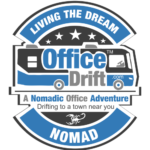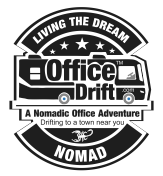 Nomadism is more common than you think
Nomadism is more common than you think
How to live as a nomad in the United States is one of the most popular questions asked these days.
It’s no big secret that every country on the planet has nomads. By definition, a nomad is one who does not stay in the same area very long. They travel short and great distances to relocate. The frequency of relocation depends on the nomads lifestyle choices.
There have been a lot of people lately that are just finding out about the nomadic lifestyle in the United States. There’s a boom coming and it’s just now starting to be noticed.
![]()
 How to live as a nomad in the United States?
How to live as a nomad in the United States?
The ball and chains
There’s really no easy answer, since there are so many different ways to do it. Each and every person has creature comforts, medical needs, financial commitments, debt, responsibilities, etc. that differ from one another. Make sure that you research the how much it costs to live a nomadic lifestyle for your needs.
![]()
 Laws that effect nomads
Laws that effect nomads
Every state,, county, and municipality has slightly different laws that vary. Depending on where you travel, it’s important to research the laws that govern the area prior to entering it’s jurisdiction.
For example, Houston, Texas laws that effect nomads can be scary looking to a lot of people, but you can creatively find ways to do it legally.
![]()
 Resource procurement
Resource procurement
As a United States nomad, resources are very important. There are lots of hunting laws with time/date restrictions, limits on game, licenses and permits required, etc. making it difficult sometimes to get through the year, especially if you are feeding a family of nomads and need to find another food and water source for the winter, so nobody starves.
I know, that sounded drastic, didn’t it? Believe it or not, a lot of nomads live very primitive and non-materialistically. Nomads in the United States used to be commonly classified as vagrants, bums, drifters, vagabonds, or gypsy’s.
United States nomads today are changing that stigma and mixing technology and comfort with the nomadic lifestyle.
At some point, what ever money or assets you have saved, will need to be used to move from one location to the next, pay for an unexpected repair, and replenish your needed resources. The more technology, creature comforts, and medical needs you have, the more you’re going to be spending for the resources to keep them handy.
![]()
 Life lines
Life lines
As a United States nomad you’re going to need a life line or two. When resources run low, you have to have a way to replenish them. That means that you need a large savings budgeted in a way it lasts your entire life time or you’re going to need a revenue stream coming in from somewhere consistently.
- If you have a pension or disability income, you already have a life line.
- If you have none of the above, you will need to learn new skills or leverage existing skills to barter, trade, or partner with someone. Most choose to work for a rate of pay, reinvest into their lifestyle, and hop to the next place to to do temporary work again (Rinse and repeat).
- Be sure that you have work lined up that you can do while you travel, otherwise, you may find yourself up the creek without a life raft when the first unexpected repair or medical bill hits.
- There are some very beautiful remote areas in the United States, however, they can be just as dangerous as they are beautiful if you didn’t go prepared.
- Communication is essential. So make sure you have at least one reliable communication device that can get a signal in the event of an emergency. If something does happen, and you can’t reach out, it may be months or years before anyone finds you.
Nomadism is not for everyone and can put you in a very dangerous situation if you don’t know what you’re doing.
![]()
 IMPORTANT: The unexpected always happens when you least expect it. No matter how good you maintain your set up, something is going to break, fail, or short circuit, eventually. The more you drive it, pull it, push it, or use it, the more wear and tear will happen, increasing the likelihood of maintenance or repair being needed.
IMPORTANT: The unexpected always happens when you least expect it. No matter how good you maintain your set up, something is going to break, fail, or short circuit, eventually. The more you drive it, pull it, push it, or use it, the more wear and tear will happen, increasing the likelihood of maintenance or repair being needed.
 WARNING: If you can’t afford repair costs just starting out, you may want to take a step back and reassess your situation to be sure a nomadic lifestyle is right for you. The last thing you want to do is get stranded somewhere you don’t want to be because your rig broke down and you can’t afford to fix it.
WARNING: If you can’t afford repair costs just starting out, you may want to take a step back and reassess your situation to be sure a nomadic lifestyle is right for you. The last thing you want to do is get stranded somewhere you don’t want to be because your rig broke down and you can’t afford to fix it.
If the above is true, a safer option for you might be to look into long term RV parks with full hookups and amenities that are more cost effective than what you pay in rent/utilities now. You can even find RV parks around the country for $100 to $350 per month including amenities. This will allow you to live below your means with some of the same creature comforts and allow you to start putting more money into your savings/retirement fund or to reinvest into bettering your lifestyle (When done right).
Once you get your finances back in order and get the hang of your rig/set-up (Inside and out), then start venturing around the country like a nomad.
This lifestyle is not for everyone. If you can, do a test run for a few weeks/months to make sure you can adapt to a smaller space, long term. You don’t want to be miserable out here, you want to be happy, healthy, and adventurous.
Note: Always keep track of your nomadic lifestyle expenses.

